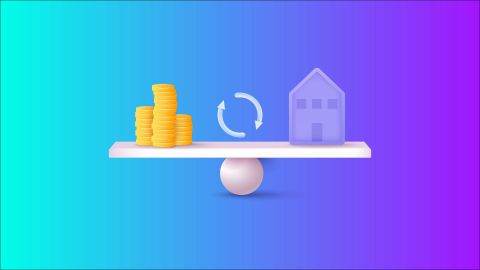Home loan fixed interest rate
When it comes to financing the purchase of a home, borrowers often face the choice between fixed and floating interest rates. A fixed interest rate is a predetermined interest rate that remains constant throughout the entire tenure of the home loan. This means that the interest rate does not fluctuate with market conditions, providing borrowers with consistency in their monthly repayments.
Benefits and advantages of fixed interest rates on home loan
- Stability and predictability: One of the primary advantages of fixed interest rates is the stability they offer. Borrowers can plan their finances with confidence, knowing that their monthly repayments will remain constant, regardless of market fluctuations.
- Protection against rate hikes: Fixed-rate home loans shield borrowers from interest rate hikes that may occur during the loan tenure. This protection can be particularly valuable in times of economic uncertainty or rising interest rates.
- Easier budgeting: With fixed interest rates, borrowers can easily budget for their home loan repayments since the monthly instalments remains the same. This can be beneficial for individuals who prefer a steady and predictable financial plan.
Key considerations
1. Interest rate lock-in:
Borrowers should be aware of any lock-in periods associated with the fixed interest rate. Some lenders may have restrictions on changing the interest rate during a specific timeframe.
2. Possibility of higher initial rates:
The initial fixed interest rates might be slightly higher compared to the initial rates offered for floating interest rate loans. Borrowers should weigh this against the benefits of long-term stability.
3. Conversion options:
Some fixed-rate loans offer conversion options, allowing borrowers to switch to a floating rate under certain conditions. It is essential to understand the terms and potential conversion fees.
Fees and charges involved
While fixed interest rates provide stability, it is essential to be aware of associated fees and charges. Common fees include:
- Prepayment charges: Some lenders may impose prepayment charges if you decide to repay the loan before the specified tenure. It is crucial to understand these charges and their impact on overall loan costs.
- Conversion fees: In case you wish to switch from a fixed-rate loan to a floating-rate loan (or vice versa), lenders might charge a conversion fee. Evaluate this fee before making such a decision.
Key difference between fixed interest rate vs floating interest rate
- Market dependency: The key difference lies in how interest rates respond to market conditions. Fixed interest rates stay constant, providing stability, while floating interest rates fluctuate based on market dynamics.
- Risk and reward: Fixed-rate loans offer stability but may not benefit from potential interest rate decreases. Floating-rate loans, on the other hand, can lead to savings if interest rates fall but come with the risk of increased repayments if rates rise.
- Borrower preference: Choosing between fixed and floating rates often depends on the borrower's risk tolerance, financial goals, and outlook on interest rate movements.




